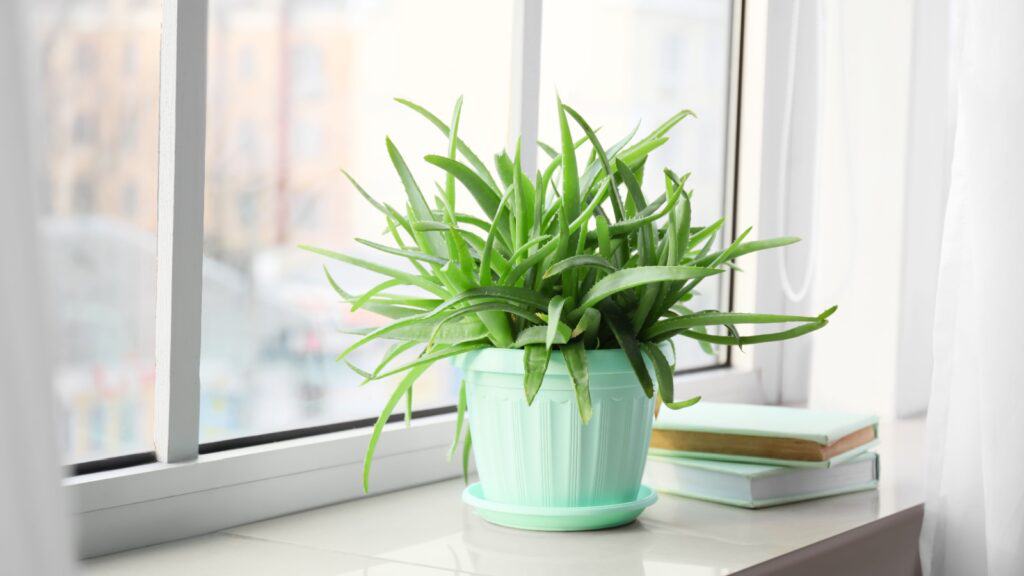The Most Foolproof Indoor Plants for People Who Struggle to Keep Plants Alive
Bringing greenery into your home can have a transformative effect on your living space, adding life, color, and even improving air quality. However, for many people, keeping houseplants alive can be a daunting challenge. If you’ve ever felt like you have a “black thumb,” you’re not alone. Fortunately, there are several indoor plants that are incredibly resilient and low-maintenance, making them perfect for those who have struggled with plant care in the past. This article will explore the most foolproof indoor plants that can thrive even with minimal attention, ensuring that everyone can enjoy the benefits of houseplants, regardless of their gardening experience.
Snake Plant (Sansevieria trifasciata)

Why It’s Foolproof: The snake plant, also known as mother-in-law’s tongue, is virtually indestructible. It can thrive in a wide range of conditions, including low light, and is highly drought-tolerant. This plant is known for its upright, sword-like leaves that are often variegated with green and yellow.
Care Tips:
- Light: While it prefers indirect light, the snake plant can tolerate low light conditions, making it ideal for dim corners.
- Watering: Allow the soil to dry out completely between waterings. Overwatering is one of the few ways to harm this plant, so less is more.
- Temperature: It can thrive in temperatures ranging from 55°F to 85°F (13°C to 29°C).
- Additional Benefits: The snake plant is also known for its air-purifying qualities, as it helps remove toxins like formaldehyde and benzene from the air.
ZZ Plant (Zamioculcas zamiifolia)

Why It’s Foolproof: The ZZ plant is another incredibly hardy option that can survive in almost any indoor environment. With its glossy, dark green leaves and upright growth habit, it’s not only easy to care for but also adds a touch of elegance to any room.
Care Tips:
- Light: It tolerates low light but can also thrive in bright, indirect light. Avoid direct sunlight, which can scorch the leaves.
- Watering: Watering needs are minimal. The ZZ plant stores water in its rhizomes, allowing it to go weeks without watering. Make sure the soil is dry before watering again.
- Temperature: The ZZ plant prefers temperatures between 60°F and 75°F (15°C to 24°C) but can tolerate a wider range.
- Additional Benefits: It is also an excellent air purifier, removing toxins like xylene, toluene, and benzene from the environment.
Pothos (Epipremnum aureum)

Why It’s Foolproof: Pothos, also known as devil’s ivy, is one of the easiest houseplants to care for, making it a favorite among beginners. Its trailing vines and heart-shaped leaves can grow in a variety of lighting conditions, and it can even be propagated easily from cuttings. Some are variegated.
Care Tips:
- Light: Pothos can grow in low light or bright, indirect light. It’s one of the best plants for low-light rooms or offices.
- Watering: Allow the soil to dry out between waterings. Pothos can withstand some neglect, so it’s forgiving if you forget to water it occasionally.
- Temperature: It thrives in temperatures between 60°F and 85°F (16°C to 29°C).
- Additional Benefits: Pothos is also known for its ability to remove indoor pollutants like formaldehyde, benzene, and carbon monoxide.
Spider Plant (Chlorophytum comosum)

Why It’s Foolproof: The spider plant is another classic houseplant that’s almost impossible to kill. Known for its arching leaves that resemble a spider’s legs, this plant is not only easy to care for but also produces “baby” plants (spiderettes) that can be easily propagated.
Care Tips:
- Light: Spider plants prefer bright, indirect light but can adapt to lower light levels.
- Watering: Water when the top inch of soil feels dry. Spider plants are tolerant of occasional neglect and will bounce back from underwatering.
- Temperature: They do well in temperatures between 55°F and 80°F (13°C to 27°C).
- Additional Benefits: Spider plants are effective at purifying the air, particularly in removing formaldehyde and xylene.
Peace Lily (Spathiphyllum)

Why It’s Foolproof: Peace lilies are known for their beautiful white flowers and lush, dark green foliage. They are incredibly low-maintenance and can signal when they need water by drooping their leaves, making it easy to know when to give them a drink.
Care Tips:
- Light: Peace lilies prefer low to medium light. Direct sunlight can burn the leaves, so it’s best to keep them out of harsh sun.
- Watering: Water when the leaves start to droop slightly, usually once a week. They are forgiving if you forget to water them for a while.
- Temperature: Peace lilies thrive in temperatures between 65°F and 80°F (18°C to 27°C).
- Additional Benefits: Peace lilies are known for their ability to filter indoor air pollutants, including ammonia, benzene, and formaldehyde.
Aloe Vera

Why It’s Foolproof: Aloe vera is a succulent that not only looks great but also has medicinal properties. It’s incredibly resilient and can survive on minimal care, making it perfect for those who might forget to water their plants regularly.
Care Tips:
- Light: Aloe vera prefers bright, indirect light. It can tolerate some direct sunlight, but too much can cause the leaves to turn brown.
- Watering: Water sparingly. Aloe vera is drought-tolerant and does not require frequent watering. Allow the soil to dry out completely between waterings.
- Temperature: It thrives in temperatures between 55°F and 80°F (13°C to 27°C).
- Additional Benefits: The gel inside aloe vera leaves can be used to treat minor cuts, burns, and skin irritations.
Cast Iron Plant (Aspidistra elatior)

Why It’s Foolproof: True to its name, the cast iron plant is almost impossible to kill. It’s a slow-growing plant with deep green, leathery leaves that can thrive in conditions that would challenge most other houseplants.
Care Tips:
- Light: It can survive in very low light, making it ideal for darker rooms.
- Watering: Water when the top inch of soil feels dry. The cast iron plant is very drought-tolerant and can go long periods without water.
- Temperature: It prefers temperatures between 60°F and 75°F (16°C to 24°C).
- Additional Benefits: The cast iron plant is highly resistant to pests and diseases, making it even easier to care for.
Rubber Plant (Ficus elastica)

Why It’s Foolproof: The rubber plant is a robust and attractive houseplant with thick, glossy leaves. It’s relatively low-maintenance and can adapt to a variety of indoor environments.
Care Tips:
- Light: Rubber plants prefer bright, indirect light but can tolerate lower light levels.
- Watering: Water when the top inch of soil is dry. Be careful not to overwater, as rubber plants prefer slightly drier conditions.
- Temperature: They thrive in temperatures between 60°F and 75°F (16°C to 24°C).
- Additional Benefits: Rubber plants are effective at removing toxins like formaldehyde from indoor air.
Jade Plant (Crassula ovata)

Why It’s Foolproof: Jade plants are succulents that are not only easy to care for but also believed to bring good luck and prosperity. They have thick, fleshy leaves that store water, making them highly drought-tolerant.
Care Tips:
- Light: Jade plants prefer bright, indirect light but can tolerate some direct sunlight.
- Watering: Water when the soil is dry to the touch. Overwatering is one of the few ways to harm a jade plant, so it’s better to err on the side of caution.
- Temperature: They do well in temperatures between 60°F and 75°F (16°C to 24°C).
- Additional Benefits: Jade plants are long-lived and can grow into impressive specimens with the right care.
You Can Grow Plants!

If you’ve struggled with keeping houseplants alive in the past, don’t despair. The plants listed above are some of the most foolproof options available, designed to thrive even with minimal care. Whether you’re looking to add a touch of green to a dimly lit room or want a low-maintenance plant that can withstand occasional neglect, these hardy indoor plants can help you enjoy the benefits of indoor gardening without the stress. With the right selection, even the most inexperienced gardener can cultivate a thriving indoor jungle.
Plan a Trip to the Top Botanical Gardens in the U.S.! An Unforgettable Journey Through America’s Finest Flora

Visiting botanical gardens is a delightful way to immerse yourself in the beauty of nature, learn about diverse plant species, and find peace in meticulously designed landscapes. The United States boasts some of the most impressive botanical gardens, each offering unique experiences and horticultural wonders. In this guide, we will explore the best botanical gardens across the country, highlighting their distinctive features and must-see attractions.
Join Us

Join us on this empowering journey as we explore, celebrate, and elevate “her story.” The Queen Zone is not just a platform; it’s a community where women from all walks of life can come together, share their experiences, and inspire one another. Welcome to a space where the female experience takes center stage. Sign up for our newsletter so you don’t miss a thing, Queen!







